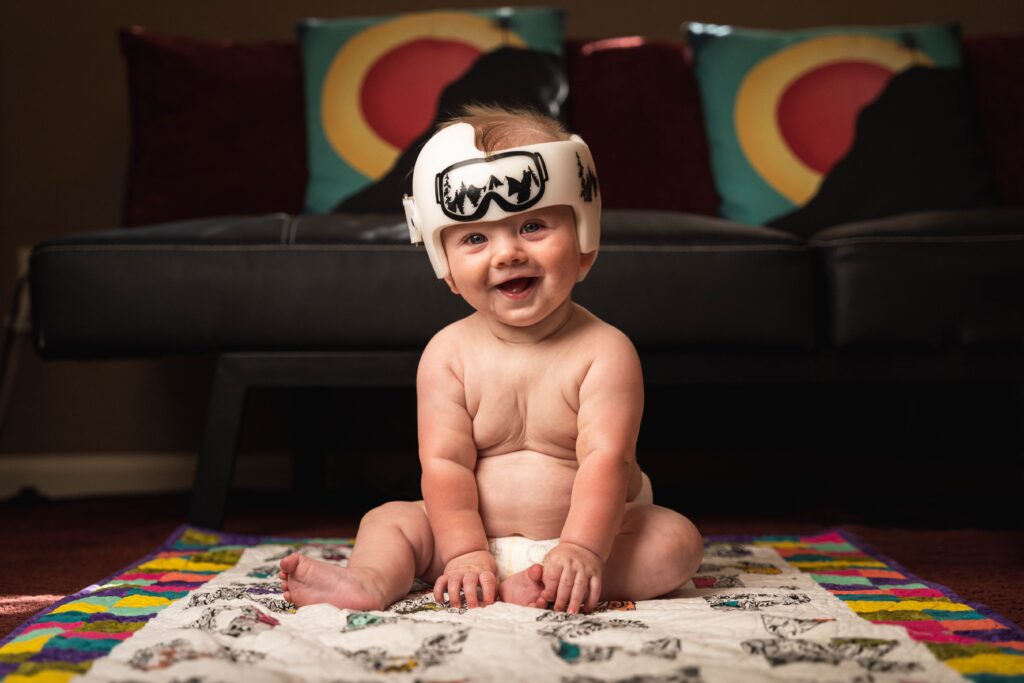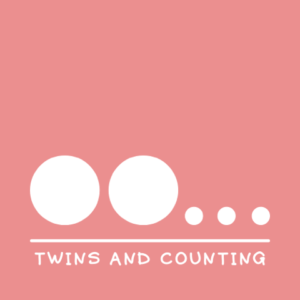
If you see a baby wearing a helmet, it is more than likely that he is doing helmet therapy. Also known as cranial orthosis, helmets help treat unusual head shapes in babies.
In case you’re wondering why adults don’t use medical helmets, this is because adults’ skulls are different from babies’ skulls. While the first ones are hard, babies’ skulls are made up of multiple malleable plates with soft spots (called fontanels) and ridges (called sutures) where their cranial bones haven’t fused together yet. This is the reason why babies can pass through the birth canal. But more than this, it can also be helpful to create space to deal with the quick growth of the brain during the first years of life.
As you can easily understand, these soft skulls can also lead babies to develop irregularly shaped heads. In some cases, they might need a helmet to correct the shape of the head.
Why Would My Twin Need a Baby Helmet?
#1: Plagiocephaly:
Plagiocephaly, misshapen head, or flat head syndrome is a condition that refers to the flattening of one of the soft skull plates of a baby’s head.
This condition is likely to occur when your twin spends a lot of time in the same position, like on his back. The good news is that it isn’t dangerous as well as it doesn’t cause any symptoms. The only thing that occurs is that your baby’s head appears flattened.
The best way to prevent this from happening is to frequently change the positions of very young babies.
#2: Brachycephaly:
Another reason why your twin baby may need a medical helmet is due to brachycephaly. Brachycephalies can be caused by sleeping on the back. This leads the head of the baby to flatten uniformly, causing a shorter and wider shape. In case your baby suffers from brachycephaly, you may also notice that his head shows increased height.
#3: Craniosynostosis:
Craniosynostosis is a condition that occurs when the cranial bones of your baby fuse too soon. It’s important to notice that this may sometimes be a part of a genetic syndrome.
When your baby’s cranial bones fuse too soon, the growth of his brain is restricted. This leads to an unusual skull shape.
Some of the symptoms of craniosynostosis include:
- raised, hard edge along the suture that has closed too early
- abnormal or missing fontanel (soft spot) on the top of the baby’s head
- abnormal growth of the baby’s head
- unevenly shaped skull.
One of the things that you need to know about this condition is that there are different types of craniosynostosis. Depending on this, your baby may experience vision loss, headaches, learning disabilities, and wide or narrow eye sockets.
In most cases, this condition requires surgical treatment and the baby still needs to use the helmet afterward.
How Long Will Your Baby Need To Wear The Helmet?
Generally speaking, babies need to use their helmets all the time. The only times when they can take it off is when they are bathing or getting dressed.
In most cases, babies need to wear a helmet for about three months. However, the exact period depends on your baby’s condition and on what the pediatrician says. Notice that during this period, you’ll need to take your baby to the pediatrician so he can see how the baby’s skull shape is evolving. It is also frequent for pediatricians to adjust helmets.
The good news is that while it may seem strange for you to have your twin wearing a helmet, it isn’t uncomfortable at all. In fact, helmet therapy should never be uncomfortable or painful for the baby. So, if you notice that your baby is more agitated than normal, you may want to take a look at the helmet. You may notice skin irritation or odor which may mean that the helmet isn’t either fitted or well-cared.
Recent Posts
Having twins can be scary, overwhelming, and hard. But, it's also beautiful, fun, and adorable! Let's focus on the positives with these cute and funny stories about raising twins. Comment which one...
Newborn photography is a beautiful way to capture the fleeting moments of your baby’s earliest days. These precious photos become cherished keepsakes, encapsulating the joy and tenderness of...
